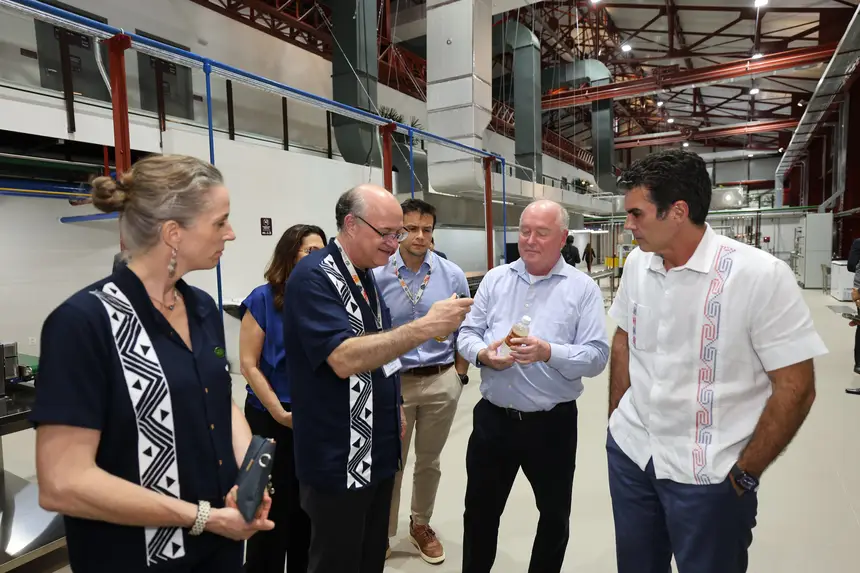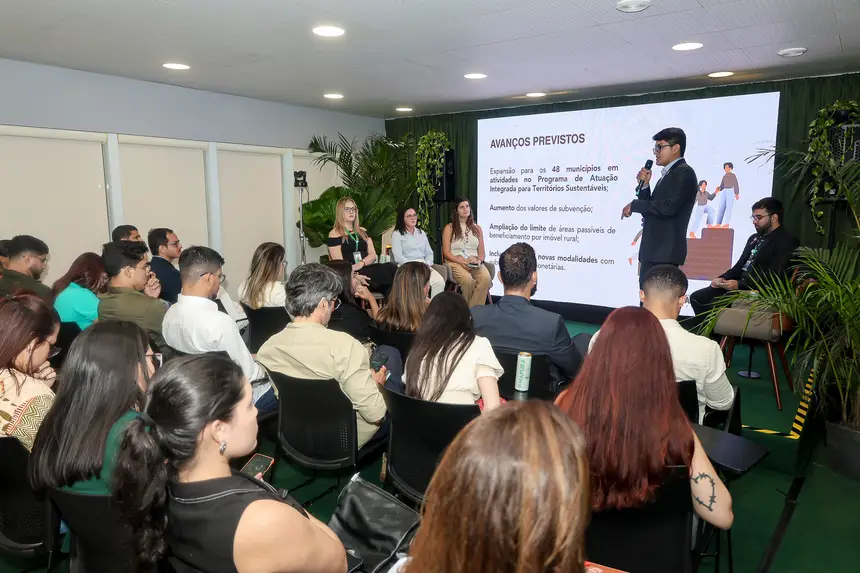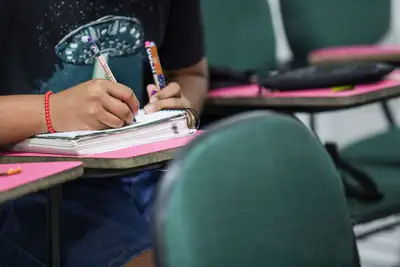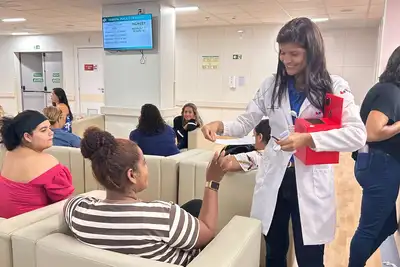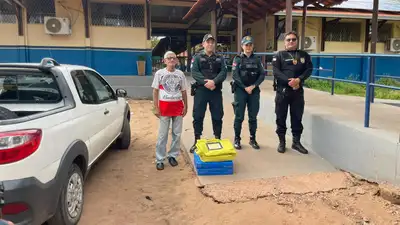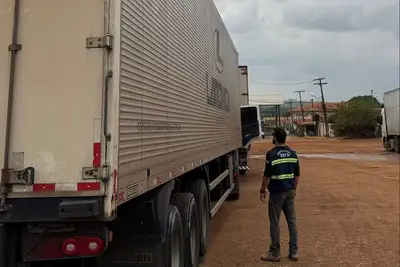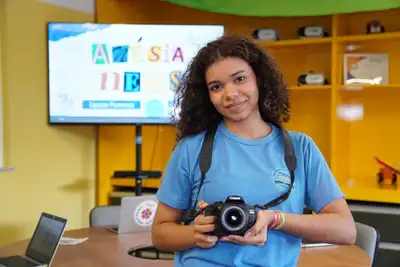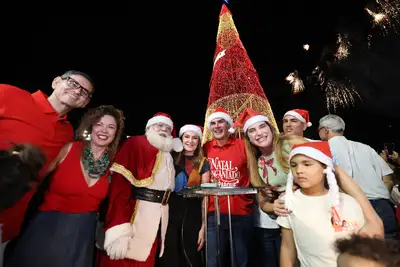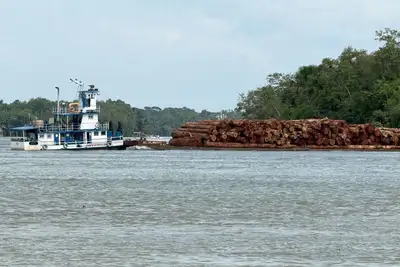Pará consolidates its role in the first week of COP30 and launches Bioamazon Valley as a showcase for the new forest economy
Between November 10 and 14, the State Government led announcements, partnerships, and international agendas that connect climate, bioeconomy, and inclusive development in the Amazon
During the first week of the 30th United Nations Climate Change Conference (COP30), held from November 10 to 14 in Belém, the Government of Pará took a central role in international climate discussions. The State presented strategic initiatives, launched structuring programs, established cooperations with global partners, and led debates that reinforce a climate transition based on the living forest and the strengthening of the bioeconomy. The highlight was the launch of the Bioamazon Valley, presented as Pará's main initiative at the conference so far and a new brand of forest-based economy.
At the official opening, Governor Helder Barbalho emphasized that Pará arrives at COP30 with concrete deliveries and a solid strategy for building a low-carbon economy. He highlighted the Amazon Now Plan, the State Bioeconomy Plan (PlanBio), and the implementation of the REDD+ Jurisdictional System as pillars of a structural climate governance capable of reducing deforestation, generating green jobs, and boosting new sustainable production chains.
This movement materializes in structures such as the Amazon Bioeconomy and Innovation Park, the Amazônia Museum, and the Guamá Science and Technology Park (PCT), which reinforce the scientific and technological base of a new ecosystem of green businesses in the State.
The social dimension of the conference also marked the week. The young Paraíba native Mavi Brilhante, 12 years old, activist and ambassador of the Limpa Brasil Institute, highlighted the plurality of COP in the Amazon. “Experiencing COP in the Amazon has been special. Seeing people from all over the world coming to listen to our people is inspiring. This is truly the 'COP of the people', bringing together indigenous peoples, different cultures, and the Brazilian richness that is helping to build a historic conference in Belém,” she said.
Bioamazon Valley: symbol of the new forest economy
The main announcement of the week, the Bioamazon Valley was launched by Governor Helder Barbalho in the Blue Zone of COP30. The initiative consolidates a new economic matrix for Pará, structured around bioeconomy, science, and the appreciation of the living forest, with results already materialized in the Amazon Bioeconomy Park.
The Valley is organized as a large innovation ecosystem, integrating equipment and policies already underway: the Bioeconomy and Innovation Park, the Amazônia Museum, the Guamá PCT, and programs to encourage research, vocational education, and the training of qualified labor, connecting government, universities, startups, and companies. The focus is on biotechnology, social inclusion, and the so-called new forest economy, generating income in Amazonian territories.
The international reach of the initiative was reinforced with the signing of a memorandum of understanding between Pará and California, connecting the Bioamazon Valley to the Silicon Valley innovation ecosystem. The agreement provides for cooperation in wildfire prevention and response, forest health monitoring, and the use of technologies for fire management and low-carbon solutions.
The visit of former U.S. Vice President Al Gore to the Amazon Bioeconomy Park in Belém reinforced the State's prominence. In the space, he learned about projects that unite scientific research, startups, entrepreneurs, indigenous peoples, and traditional communities around new business models based on sociobiodiversity.
Partnerships, financing, and instruments for climate transition
The week was also marked by strategic agreements that strengthen the climate transition in Pará. Governor Helder Barbalho signed a cooperation agreement with Hydro to expand the operational capacity of the State Program for the Prevention and Combat of Burnings and Forest Fires (PEPIF). The commitment, valid for 36 months, provides for the donation of equipment, logistical support, training of brigades, and actions aligned with the State Policy on Climate Change.
As a symbolic and permanent gesture, the Peace Bank was presented, a low-carbon aluminum structure produced in Pará, which will remain as an urban legacy in Belém, stimulating dialogue and reflection on sustainability.
In the community bioeconomy agenda, the State Government signed contracts for the second edition of the Inova Sociobio Program, with an investment of R$ 3.4 million to support 20 new community-based enterprises. In the same act, Helder Barbalho announced a new investment of R$ 3.5 million, expanding the program to indigenous, quilombola, extractive, and rural producer communities, connecting income generation, forest conservation, and social justice.
At the regional level, the Inter-State Consortium of the Legal Amazon launched the Amazon 2050 Strategy and the CAL 2050 platform, an unprecedented base of environmental and territorial data to guide long-term public policies. The tool gathers geospatial, climatic, and land use information, allowing monitoring of deforestation, forest regeneration, emissions, and investments.
Pará also advanced in consolidating its REDD+ Jurisdictional System by delivering to the international ART TREES standard the documentation on the reduction of 38 million tons of CO₂ in 2023, a decisive step for the certification of carbon credits at the state level. In addition, it signed with the Inter-American Development Bank (IDB) the country's first multilateral guarantee aimed at forest restoration.
Amazônia governance, cities, and legacy for the territories
As the president of the Legal Amazon Consortium, Pará delivered the Amazon Hub in the Blue Zone, the official space of the nine Amazon states at COP30. The location has consolidated itself as a point of political and technical articulation, with debates on sustainable development, environmental education, communication, climate security, and the appreciation of Amazonian populations.
Shared governance marked meetings between governors, mayors, and authorities from various countries, at the Estação das Docas and other spaces in the city. Governor Helder Barbalho emphasized the role of local governments in implementing the Nationally Determined Contributions (NDCs) and in building resilient cities, a theme also addressed in his participation in events in the productive sector, such as the SB COP – Business Dialogue for a Low Carbon Economy, from CNI.
Vice Governor Hana Ghassan also integrated sectoral agendas, including launches and environmental programs that reinforce the transversality of climate action in the State.
In the territorial axis, the launch of the largest marked trail in Latin America, connecting Belém to Viseu and crossing conservation units and quilombola territories, showed how the climate agenda translates into nature tourism, income generation, and cultural appreciation.
The international perception of Belém and Pará was expressed by the ambassador of São Tomé and Príncipe in Portugal and Brazil, Esterline Género: “I also wanted to congratulate Brazil, the Government of Pará, and all Brazilians in particular for this exemplary, beautiful organization that fills us with pride. I found Belém fantastic, I felt at home: the climate, the people, the delicacies, the food, everything very good and a lot of good people.”
At the end of the first week of COP30, the balance shows that Pará not only hosts the conference but asserts itself as a living laboratory of climate solutions. From the Bioamazon Valley to international partnerships, from financial guarantees to community bioeconomy, the State demonstrates that it is possible to unite living forest, innovation, development, and well-being for those who live in the Amazon.


